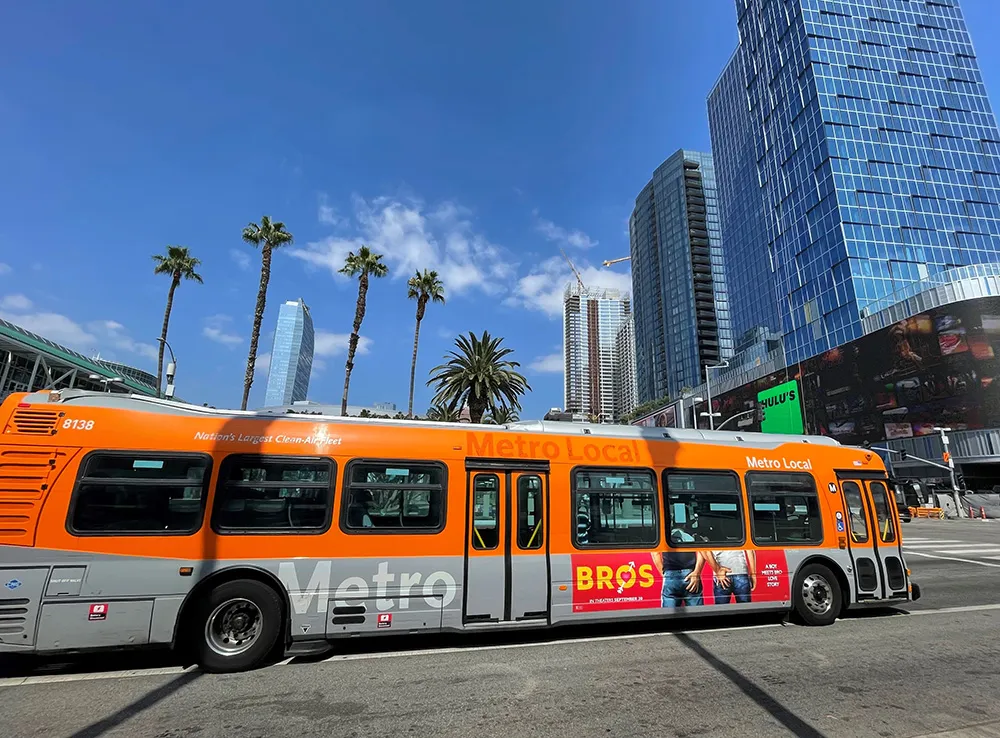
In 2015, I had the amazing opportunity to leave my home in Portland, Oregon and spend 18 months living and working in Sydney, Australia. This was a new experience for me in many ways: my first time living outside of the US as an adult, a new job with exciting challenges and opportunities, and my first time living without a car and relying on public transit for my mobility needs.
My time in Australia was transformative. While I was pleasantly surprised by so many aspects of Sydney, I was most amazed by how much I didn’t miss having a car. I moved to Australia unsure whether I’d be able to get around without my Subaru Outback, but after just a few weeks of using my Opal card to travel, I found myself wondering why I had ever wanted a car here in the first place!
I would ride the ferry around Sydney Harbour for fun, and on Sundays my husband and I could take public transit to the Blue Mountains, a comfortable, stress-free five-hour round trip adventure with a total cost of just $2.80 each.
When I moved home in 2017, I couldn’t put the idea out of my mind that we Americans didn’t know what we were missing. Why can’t we have this type of public transit experience in the US? Why can’t it be as easy and stress-free for me to get to Mt. Hood here in Portland as it was for me to reach the Blue Mountains in Sydney?
In my work today for Cubic Transportation Systems, I’m driven by my experience in Sydney and by the idea that we can help put people back at the heart of the public transit experience so no matter where they live—big city or small—they can get where they want to go faster, more comfortably and with less stress. So, what does a public transit experience need to look like in order to get customers excited about choosing the train, bus or ferry over their car?
Building around customer choice
Today’s public transit agencies are competing with an experience that is central to the American identity: owning your own car. What’s more, ride-share companies like Uber and Lyft have given customers the opportunity to travel by car without common stresses like finding a parking spot and paying for insurance and repairs.
For transportation providers to compete with the automotive industry and win over customers to public transit services, they need to approach the problem from the perspective of the rider. What leads a commuter to choose driving in traffic and paying for a parking spot rather than taking the subway? What is it about the ride-share experience that has customers willing to pay a premium to travel the same route serviced by a city bus?
Keys to winning over the transit-curious
To reach new customers and convert long-time car owners into transit riders, I believe agencies need to focus on these strategies:
1. Learn from private industry
Ride-sharing apps like Uber and Lyft changed the way people travel in large cities. Transit agencies need to identify what customers enjoy about the ride-share experience and see what can be applied to public transportation. A ride-sharing app allows the user to book and pay for their journey and then shows the rider where their car is, when it will arrive and how long their journey will take; there’s no reason public transit can’t communicate with the same precision. They offer riders the choice between different experiences at different prices; transit authorities can also display different route and mode options, allowing riders to choose their preferred route depending on their priorities, whether that’s the fastest journey, the lowest price, or the most environmentally friendly.
2. Create loyalty through incentives
Public transit is part of the fabric of most cities and towns. Why not take steps to weave your agency further into the community? Partnerships with small businesses can provide a much-needed boost to the local economy. Transit agencies could offer riders incentives such as a free coffee at a local café along their transit route in exchange for using public transit or travelling outside a peak time. Travellers can be rewarded for their loyalty, and businesses along transit routes will jump at the chance to reach such a perfectly targeted audience; this kind of synergy is a win for everyone involved.
3. Keep things simple
The most transformative companies of the last decade have been those that have made life much easier for customers. Think Netflix, which gave its subscribers a one-stop destination for video entertainment, or Amazon, which brought an entire world of shopping options under the umbrella of its Marketplace. Transit agencies can offer this kind of simplicity, too: by bringing all modes of transportation into a single account where travellers can explore, pay and go wherever life takes them. Bringing services together seamlessly, transit providers can become a go-to resource for their customers.
Even as we navigate through a period where many of us are travelling less than we ever have, I’m hugely optimistic for the future of mobility in our country. By putting the customer at the centre of our work, we can create a transit experience that riders are excited to choose every day.
ABOUT THE AUTHOR
Bonnie Crawford is product & business unit leader for global technology companies, Cubic Transportation Systems










